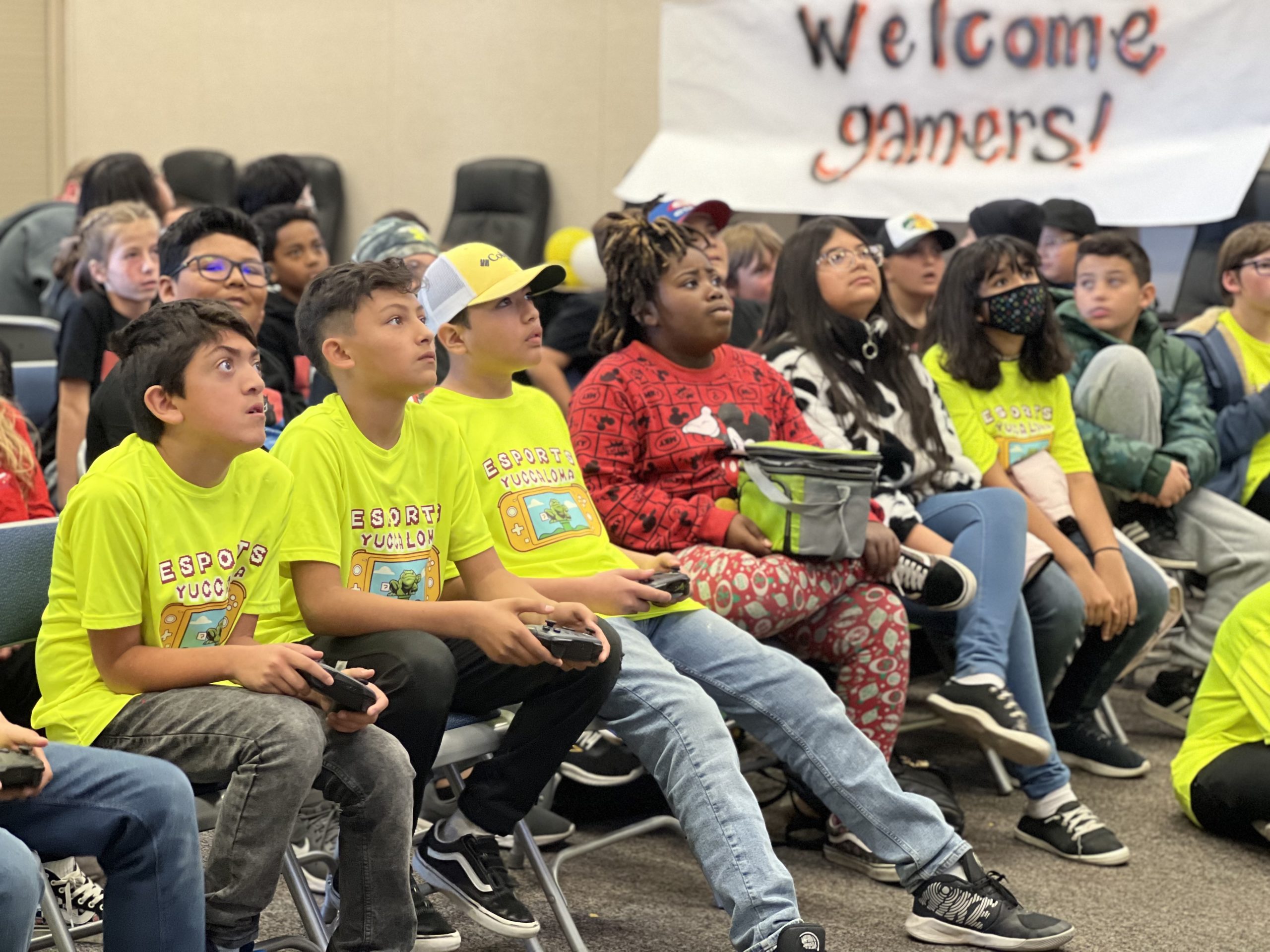
APPLE VALLEY – Yucca Loma Elementary School students took first place, last week, in Apple Valley Unified School District’s (AVUSD) first district wide esports tournament. Nationwide, esports in K-12 are growing in popularity due to the potential for obtaining college scholarships and career opportunities.
Students from Yucca Loma Elementary, Vanguard Preparatory, Rio Vista School of Applied Learning, and Desert Knolls Elementary competed in Mario Kart which was livestreamed on Youtube. The Apple Valley Fire Department presented awards to the tournament winners.
The first annual Holiday Esports Tournament was so much fun! The @AVFPD came by to hand out awards that were made by AVHS’s AVEX program and stickers courtesy of AVHS’s Graphics classes. Mrs. Nelson even got in on the fun! pic.twitter.com/QeIUkziHxt
— Apple Valley Unified School District (@AVUSD) December 13, 2022
Hesperia also held an esports tournament earlier this year during Spring Break.
Esports origins
Although esports is new to K-12 afterschool curriculum, competitive gaming can be traced back to South Korea, the birthplace of esports. Many believe the mass buildout of internet broadband following the 1997 Asian financial crisis and high unemployment rate at the time that caused many people to look for things to do while out of work, created their esports industry.
In 2000, the South Korean Ministry of Culture, Sports and Tourism founded the eSports Association to promote and regulate esports in the country. Television coverage was also best established in South Korea with TV game channels dedicating 24 hour coverage to StarCraft and Warcraft III competitions.
In other parts of the world, esports television coverage was sporadic. Germany, the United Kingdom, France, and the US have all had televised esports competitions off and on. There were 10 esports tournaments world wide.
Now there are hundreds of tournaments globally with some garnering millions in both viewership and prize money.
Game developer Valve’s International 2021, a Dota 2 esports tournament, awarded first place winners Team Spirit $18 million – the largest payout in esports history. The tournament viewership peaked at 2.7 million viewers.
The rise of collegiate esports
Robert Morris University in Illinois, became the first college, in 2014, to start a formal esports program with varsity status and scholarships – students received up to 50% of tuition and 50% of room and board, or $19,000 per year.
Over 100 colleges now offer a varsity esports program with many providing scholarships. The National Association of Collegiate Esports (NACE) serves as their governing board. According to NACE, the average esports scholarship student receives $4,800 in tuition a year.
With 51 percent of college students saying an esports athlete is a viable career option, colleges are adapting to the times amidst declining enrollment numbers.
Institutions have had to find new ways to attract and retain new pools of students that can afford tuition.
In a survey conducted with 97 small schools that had esports programs, it was reported that the median number of students enrolled partly or entirely due to esports in the first year of program operation was 10.
Esports in K-12 afterschool curriculum
K-12 educators also cite increased engagement with the introduction of esports into afterschool curriculum.
The California Department of Education approved, in 2019, the North America Scholastic Esports Federation (NASEF)’s four-year high school esports curriculum. NASEF Founder Gerald Solomn says he created NASEF with the goal of opening up esports in schools for students to use as a platform to develop Science, Technology, Engineering, Art and Math, or STEAM skills.
The curriculum is now being taught in 2,500 schools in 49 states, and has developed affiliates in 23 countries such as Japan, where leaders are working to develop scholastic esports programs.
Not only do educators feel these afterschool esports programs can set up students for careers in STEAM and in esports as athletes, content creators, strategists, or organizers, but it’s a chance for students to develop soft skills like teamwork, communication, and leadership.
Video Gaming Pitfalls
In December 2022, UC San Francisco researchers released a study that found the odds of developing obsessive compulsive disorder (OCD) over a two-year period, for preteens, increased by 13% for every hour they played video games.
“Children who spend excessive time playing video games report feeling the need to play more and more and being unable to stop despite trying,” said UCSF Assistant Professor of Pediatrics and lead author of the study Jason Nagata, MD. “Intrusive thoughts about video game content could develop into obsessions or compulsions.”
Nagata says families can develop a media use plan which could include screen-free times including before bedtime.

